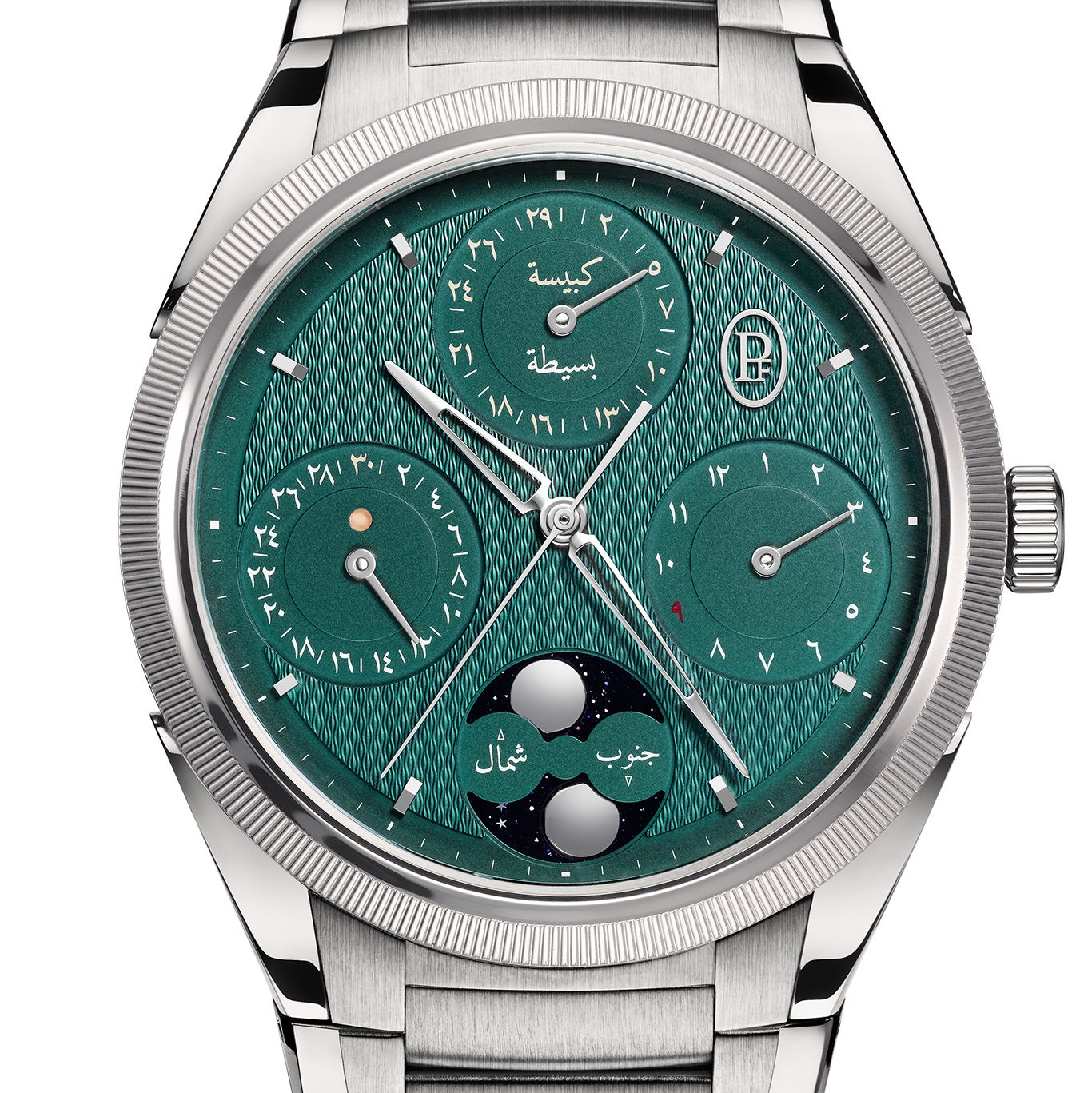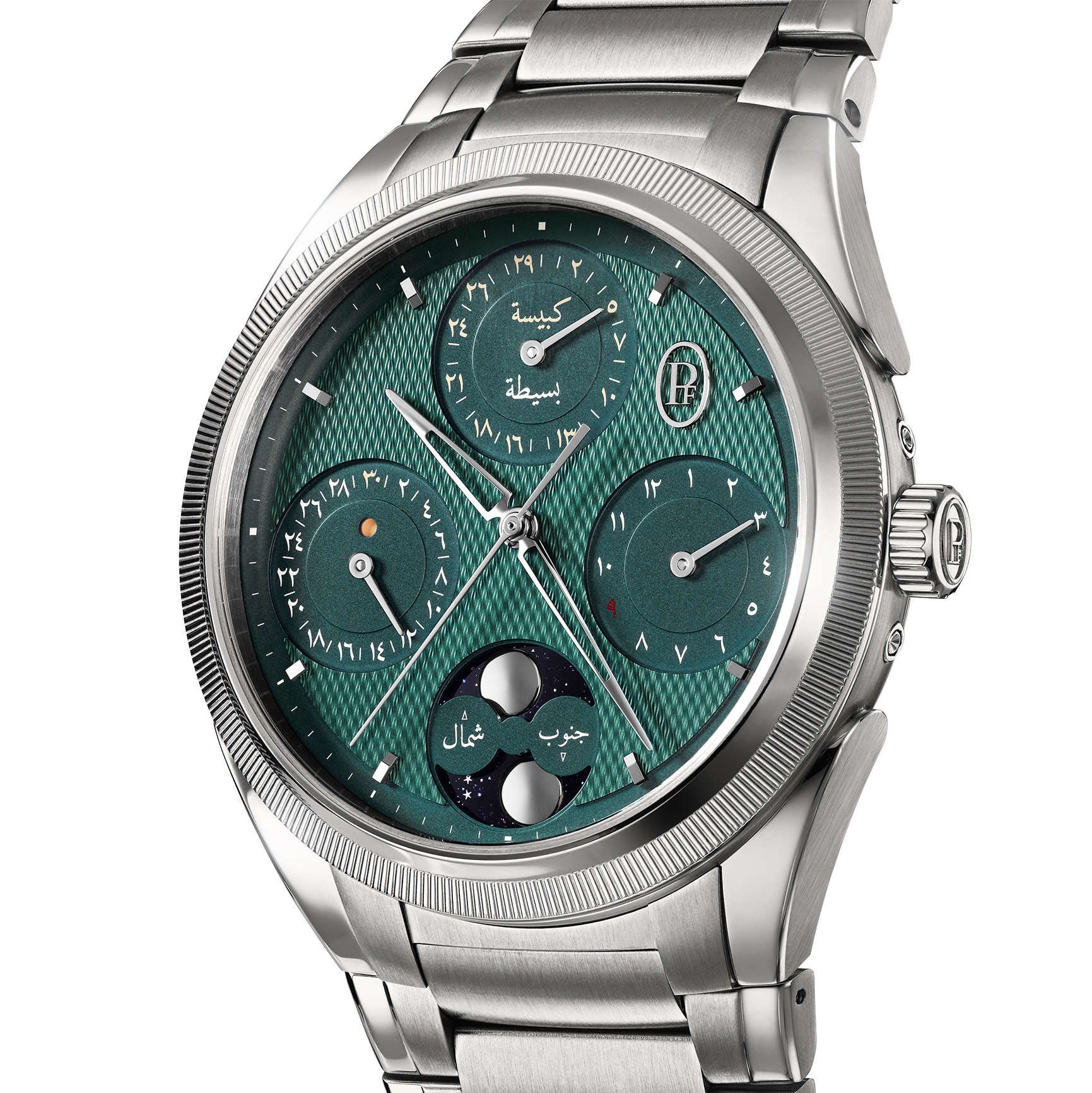
Tonda PF Hijri Perpetual Calendar
Power reserve: 48 h, 28800 vph
The Tonda PF Hijri Perpetual Calendar is a testament to Michel Parmigiani's belief that watchmaking can and should be a window into the history, culture and philosophy of the peoples who have shaped our perception of time. Hijri is the watchmaking expression of the tabular Islamic calendar that was developed by Muslim scholars and astronomers in the 8th century. The first year of the calendar corresponds to the year 622 CE and is marked by the Hijra (in Arabic "migration") of the Prophet Muhammad from Mecca to Medina in present-day Saudi Arabia. The Hijri calendar is based on the cycles of the moon. This constitutes a 30-year cycle with each year consisting of 12 months of 29 or 30 days. In each 30-year cycle, there are 19 common years of 354 days and 11 abundant years of 355 days. Tonda PF Hijri Perpetual Calendar displays all the information on the dial. The 12-hour sub-dial shows the 30-year cycle with the abundant years of 355 days in yellow and the standard years of 354 days in white. The 3-hour sub-dial shows the numbered months of the year with the ninth month of Ramadan highlighted in bright red. The 9-hour sub-dial shows the days of the month with an aperture indicating whether it is a 30-day bountiful month or a common month of 29 days. A white aperture indicates a month of 29 days while the activated yellow aperture indicates a month of 30 days, taking into account the yellow number for 30 which is written in Arabic as ٣٠. Finally, the 6-hour sub-dial features the blue aventurine moon phase display, which shows the moon's position in the northern and southern hemispheres.



